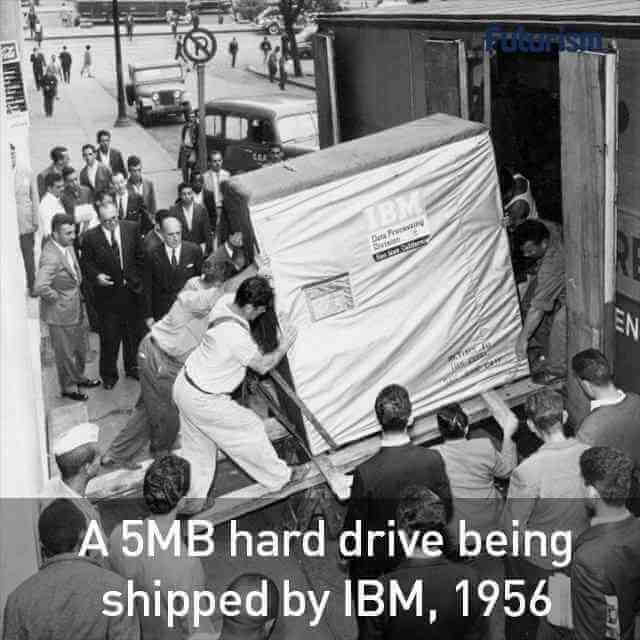In September 1956 IBM launched the 305 RAMAC, the world’s first supercomputer with 5 MB of data.
The machine weighed over a ton — it took a team of people to transport it.
To put the computer size and storage in perspective, our pocket-sized phones contain 256GB of storage. A grain of rice dwarfs the world’s smallest computer.

120 Years of Moore’s Law
Like fire and farming techniques before it, the ubiquity of computers and the exponential processing speed of chips, also known as Moore’s Law, changed the course of history. But even Moore’s Law is dying in exchange for brain-inspired chips.
Writes venture capitalist Steve Jurvetson who updated Ray Kurzweil’s visualization of Moore’s Law:
The fine-grained parallel compute architecture of a GPU maps better to the needs of deep learning than a CPU. There is a poetic beauty to the computational similarity of a processor optimized for graphics processing and the computational needs of a sensory cortex, as commonly seen in neural networks today.
Stephen T. Jurvetson

Dare we say it, the next supercomputer is not only artificially intelligent, but it also melds the mind and the machine.
Forget Google. Imagine having already downloaded all the relevant knowledge directly to your mind and using it expeditiously.
Here’s how IBM’s Director of Research Dario Gil sees the fusion of chips, neurons, artificial intelligence, and quantum computing wiring together.
“We’re beginning to see an answer to what is happening at the end of Moore’s law. It’s a question that has been the front of the industry for a long, long time.
And the answer is that we’re going to have this new foundation of bits plus neurons plus qubits coming together, over the next decade [at] different maturity levels – bits [are] enormously mature, the world of neural networks and neural technology, next in maturity, [and] quantum the least mature of those. [It] is important to anticipate what will happen when those three things intersect within a decade.”
Dario Gil
